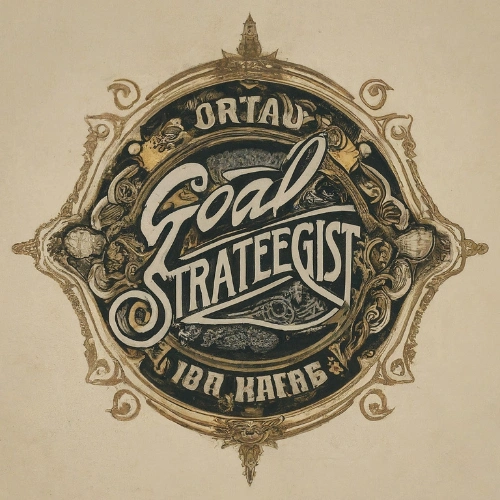Meeting your child’s Individualized Education Program (IEP) goals early can feel like a huge win. You’re likely wondering, “What’s next?” Achieving these milestones ahead of schedule opens up new opportunities for growth and learning.
It’s a chance to reassess and adjust the educational plan to ensure your child continues to thrive. Don’t worry; there’s a process in place for this scenario. You’ll discover how the IEP team springs into action to keep the momentum going.
When goals are met early, it’s not just about setting new ones. It’s about celebrating progress and ensuring your child’s needs are continuously met. Let’s dive into what this means for your child’s educational journey.
Setting New Goals
Once your child meets their IEP goals earlier than anticipated, it’s crucial to capitalize on this momentum. Establishing new targets ensures your child’s educational journey doesn’t plateau but continues to challenge and engage them.
Why New Goals Matter
Your child’s early success is a sign that they’re capable of achieving more, perhaps at a faster pace or with increased complexity. It also provides valuable insight into their learning style and potential. Here’s why setting new goals is essential:
- Continuous Progress: It prevents regression or stagnancy by maintaining an appropriate level of challenge.
- Motivation: New milestones keep your child motivated and invested in their learning.
- Skill Development: As your child advances, they’ll acquire new skills that prepare them for future academic and personal challenges.
Crafting the Next Steps
Revisiting the IEP team is your first step. This collaborative group, including educators, therapists, and your input as a parent, are pivotal in the goal-setting process. When crafting new goals:
- Assess Strengths and Weaknesses: Understand your child’s current capabilities to tailor objectives that promote growth.
- Make Them SMART: Specific, Measurable, Achievable, Relevant, and Time-bound goals lead to better outcomes.
- Prioritize Engagement: Goals should spark interest and enthusiasm in your child.
The IEP team will leverage assessment data and educational expertise to set these new objectives, ensuring they’re both ambitious and attainable. Remember, these goals aren’t set in stone; they should be flexible to your child’s evolving needs and accomplishments.
Monitoring and Adjusting
Once new goals are set, close monitoring is necessary. This may involve:
- Regular Check-Ins: Frequent meetings with the IEP team will keep everyone on track.
- Data Collection: Documenting progress provides a factual basis for any necessary adjustments.
- Parental Involvement: Stay engaged in the process and advocate for your child’s needs.
Staying proactive in your child’s education means being prepared to set new targets as soon as they’re ready for them. Focus on a seamless transition to these fresh goals to maintain their growth trajectory.
Celebrating Progress
Reaching IEP goals ahead of schedule is a significant milestone for your child. It’s an outcome that deserves recognition and celebration. Celebrate the victory with your child. This not only reinforces their success but serves as a motivator for them to set and achieve future goals. Consider praise, a special outing, or a favorite activity – whatever resonates most with your child.
When you celebrate these achievements, you’re not just rewarding the outcome but also acknowledging the hard work and dedication involved. Positive reinforcement can boost your child’s self-esteem and reinforce their love for learning. It also helps in demonstrating the value of setting and working towards goals, which is a critical life skill.
Remember, celebrations don’t need to be grand gestures. Simple acknowledgments or small rewards can be just as effective. As a parent or educator, your recognition sends a powerful message to your child that their efforts are seen and valued.
Additionally, sharing your child’s progress with their support system can lead to a collective effort in recognition. This might include teachers, therapists, and family members who have been involved in the process. Collaborative celebrations deepen the impact of the achievement and often provide a support network for future challenges.
It’s equally important to document the achievement within the IEP itself. Update the records to reflect the progress, which is essential for tracking educational journeys over time.
By celebrating each milestone, you’re not only emphasizing the accomplishment but also setting a positive tone for the ongoing development of new IEP goals. Such recognition plays a pivotal role in continued motivation and can significantly influence the enthusiasm with which your child approaches learning and goal-setting in the future.
Reassessing and Adjusting the Educational Plan
When IEP goals are met ahead of schedule, it’s a clear signal that your child’s educational plan needs reassessment. Doing so ensures that the current needs of your child are being met efficiently and that they continue to benefit from an appropriately challenging learning environment.
Meeting with the IEP team should be your first action. This collaborative group, including teachers, therapists, and school administrators, play a crucial role in evaluating your child’s progress. You’ll want to discuss the successes and consider whether the current goals were challenging enough or if your child has made leaps in development that necessitate a review of their skill levels.
During the reassessment, new goals will be set. These goals should align with your child’s growing abilities while continuing to support areas that need further development. It’s important to make these goals measurable and time-specific, just as the original IEP stipulated.
Here are actionable steps that can be taken:
- Consolidate existing data: Review your child’s performance data to understand where they excel and where there’s room for improvement.
- Set new benchmarks: Determine what the next logical step is in your child’s education and set tangible, achievable benchmarks.
- Adjust the IEP: Any changes in goals should be documented and your child’s IEP should be formally updated.
Remember, the IEP is a flexible roadmap to your child’s success—it can and should change as your child grows and their needs evolve. The key is to maintain an ongoing dialogue with your child’s support system and to push for an educational plan that continually aligns with their potential. Regularly scheduled IEP meetings are an excellent opportunity to adjust goals, but don’t be afraid to request additional meetings if your child is outpacing their objectives.
Keep tracking progress closely as this not only paints a clear picture of what’s working, but also identifies the strategies that should either be reinforced or reimagined to sustain your child’s growth trajectory.
Involvement of the IEP Team
When your child’s IEP goals are met ahead of schedule, it’s crucial to involve the IEP team in the reassessment and goal-setting process. The team’s insight and expertise are invaluable for ensuring that your child’s educational needs continue to be met with the same rigor and attention as when their original goals were established.
Members of the IEP team typically include:
- Your child’s teachers
- Special education professionals
- School administrators
- Therapists (if applicable)
- You, as the parent or guardian
Together, you’ll review your child’s milestones and current abilities. It’s vital to consider both the quantitative data from assessments and the qualitative insights from day-to-day classroom observations.
Data-Driven Decision Making is a cornerstone of the process. Teachers and therapists can provide standardized test scores, reading levels, math benchmarks, or other relevant performance indicators that offer a concrete measure of your child’s abilities. This data helps to craft a new set of goals that are challenging, yet attainable and tailored to your child’s individual progress.
Regular team meetings play a critical role in aligning everyone’s efforts and keeping communication open. During these meetings, you can:
- Discuss progress and concerns
- Share insights about how your child performs at home and in the community
- Help ensure that the new goals align with your child’s long-term educational plans
Maintenance of an Individualized Approach ensures that your child doesn’t just move along a predefined educational path but one that adapts to their specific learning trajectory. The IEP team’s commitment to this personalized plan promotes consistent growth and prevents potential learning plateaus.
Remember, the IEP is a living document. As such, it should be revisited and revised as often as necessary to reflect your child’s evolving needs and abilities. Keeping the momentum of achievement going relies on the team’s proactive stance in adapting the IEP to fit your child’s burgeoning skill set.
Continuous Support for Your Child’s Needs
When your child meets their IEP goals early, it’s a clear sign of their progress and success. But the journey doesn’t stop there. Continuous support is key to keeping the momentum going and ensuring that your child doesn’t just maintain their current level of achievement but also builds on it.
Adjusting the Learning Pace
Your child’s rapid attainment of goals suggests they may be ready for new challenges at an accelerated pace. The IEP team should consider this when setting subsequent objectives. Adjustments to the learning pace can involve:
- Introducing more complex material earlier than planned
- Offering advanced courses or activities if appropriate
- Encouraging extracurricular involvement to further develop skills
Seamless Transition to New Goals
Transitioning to new IEP goals should be seamless, avoiding any potential learning gaps. The IEP team’s agility in responding to your child’s progress ensures that:
- They are consistently engaged and motivated
- Skill sets continue to expand without unnecessary repetition
- The curriculum adapts with your child’s growth
Ongoing Evaluations and Checkpoints
Monitoring progress is a never-ending process in the educational journey. Frequent evaluations:
- Provide real-time feedback on new goal attainment
- Help identify areas that may require additional support or resources
- Enable the IEP team to make informed decisions promptly
By treating each goal met not as a finish line but as a check-point, you’re affirming that your child’s learning is an evolving process. With the right mix of acknowledgment and anticipation for what’s next, their educational path stays dynamic and responsive to their unique, changing needs. The IEP team’s active involvement at every step ensures that your child’s IEP is a living document that grows with them, fostering a learning environment where they can thrive.
Conclusion
Meeting IEP goals early is a sign of your child’s progress and potential. It’s essential to keep the momentum going by adapting and expanding their educational plan. Remember, your child’s growth doesn’t stop with these achievements. You’ve got an active role alongside the IEP team to recalibrate goals and ensure your child’s learning journey is continuously supported. Stay proactive, stay involved, and watch as your child reaches new heights in their education.


Leave a Reply